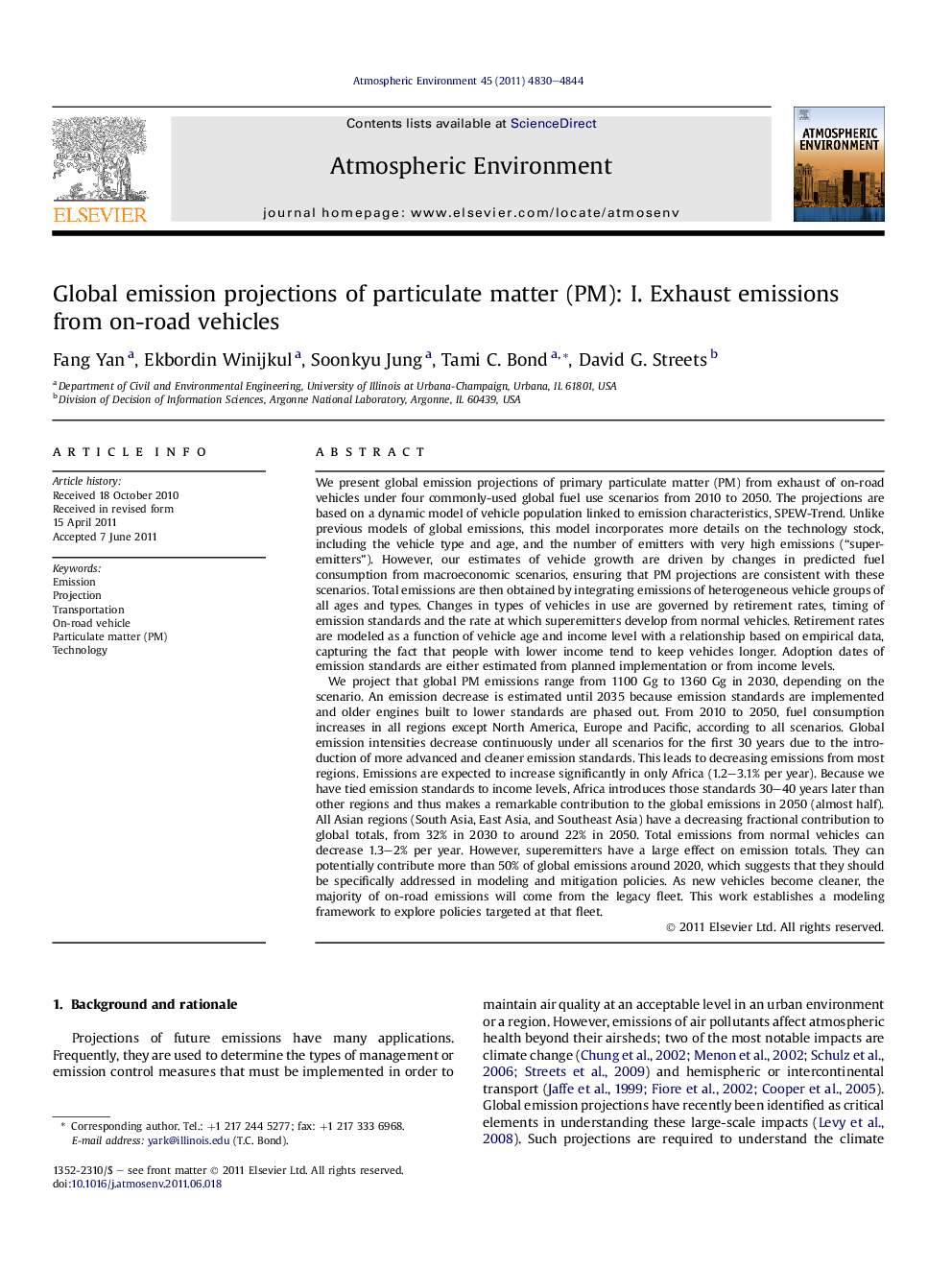| کد مقاله | کد نشریه | سال انتشار | مقاله انگلیسی | نسخه تمام متن |
|---|---|---|---|---|
| 4439591 | 1311026 | 2011 | 15 صفحه PDF | دانلود رایگان |

We present global emission projections of primary particulate matter (PM) from exhaust of on-road vehicles under four commonly-used global fuel use scenarios from 2010 to 2050. The projections are based on a dynamic model of vehicle population linked to emission characteristics, SPEW-Trend. Unlike previous models of global emissions, this model incorporates more details on the technology stock, including the vehicle type and age, and the number of emitters with very high emissions (“superemitters”). However, our estimates of vehicle growth are driven by changes in predicted fuel consumption from macroeconomic scenarios, ensuring that PM projections are consistent with these scenarios. Total emissions are then obtained by integrating emissions of heterogeneous vehicle groups of all ages and types. Changes in types of vehicles in use are governed by retirement rates, timing of emission standards and the rate at which superemitters develop from normal vehicles. Retirement rates are modeled as a function of vehicle age and income level with a relationship based on empirical data, capturing the fact that people with lower income tend to keep vehicles longer. Adoption dates of emission standards are either estimated from planned implementation or from income levels.We project that global PM emissions range from 1100 Gg to 1360 Gg in 2030, depending on the scenario. An emission decrease is estimated until 2035 because emission standards are implemented and older engines built to lower standards are phased out. From 2010 to 2050, fuel consumption increases in all regions except North America, Europe and Pacific, according to all scenarios. Global emission intensities decrease continuously under all scenarios for the first 30 years due to the introduction of more advanced and cleaner emission standards. This leads to decreasing emissions from most regions. Emissions are expected to increase significantly in only Africa (1.2–3.1% per year). Because we have tied emission standards to income levels, Africa introduces those standards 30–40 years later than other regions and thus makes a remarkable contribution to the global emissions in 2050 (almost half). All Asian regions (South Asia, East Asia, and Southeast Asia) have a decreasing fractional contribution to global totals, from 32% in 2030 to around 22% in 2050. Total emissions from normal vehicles can decrease 1.3–2% per year. However, superemitters have a large effect on emission totals. They can potentially contribute more than 50% of global emissions around 2020, which suggests that they should be specifically addressed in modeling and mitigation policies. As new vehicles become cleaner, the majority of on-road emissions will come from the legacy fleet. This work establishes a modeling framework to explore policies targeted at that fleet.
► Projections of PM emissions from on-road vehicles from a global vehicle fleet model.
► Fleet dynamics linked to income levels under four economic scenarios.
► Lower emission intensity dominates increasing fuel use, resulting in lower emission.
► With possible contribution over 50% after 2020, superemitters may dominate emission.
Journal: Atmospheric Environment - Volume 45, Issue 28, September 2011, Pages 4830–4844